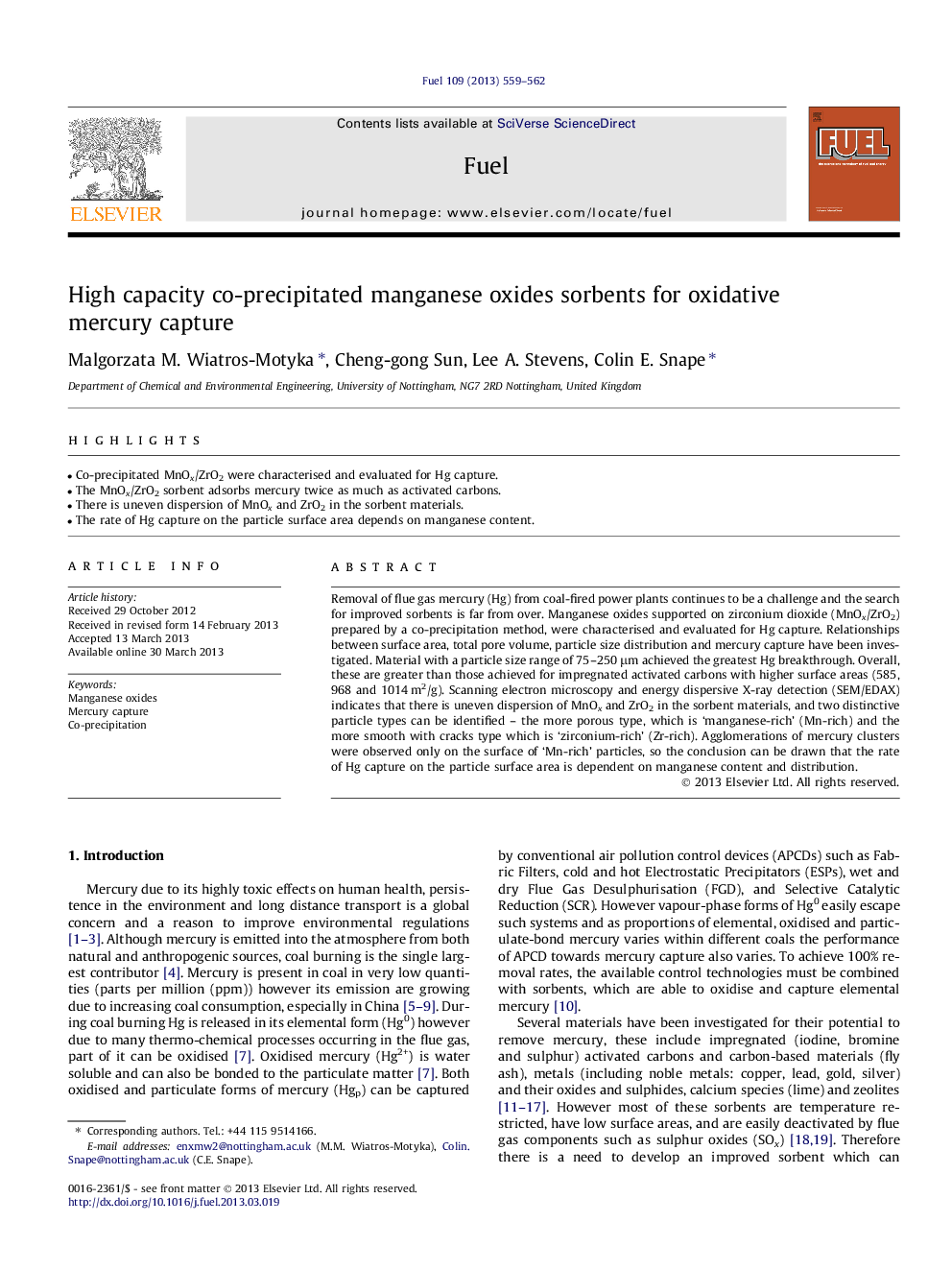| Article ID | Journal | Published Year | Pages | File Type |
|---|---|---|---|---|
| 6641452 | Fuel | 2013 | 4 Pages |
Abstract
Removal of flue gas mercury (Hg) from coal-fired power plants continues to be a challenge and the search for improved sorbents is far from over. Manganese oxides supported on zirconium dioxide (MnOx/ZrO2) prepared by a co-precipitation method, were characterised and evaluated for Hg capture. Relationships between surface area, total pore volume, particle size distribution and mercury capture have been investigated. Material with a particle size range of 75-250 μm achieved the greatest Hg breakthrough. Overall, these are greater than those achieved for impregnated activated carbons with higher surface areas (585, 968 and 1014 m2/g). Scanning electron microscopy and energy dispersive X-ray detection (SEM/EDAX) indicates that there is uneven dispersion of MnOx and ZrO2 in the sorbent materials, and two distinctive particle types can be identified - the more porous type, which is 'manganese-rich' (Mn-rich) and the more smooth with cracks type which is 'zirconium-rich' (Zr-rich). Agglomerations of mercury clusters were observed only on the surface of 'Mn-rich' particles, so the conclusion can be drawn that the rate of Hg capture on the particle surface area is dependent on manganese content and distribution.
Related Topics
Physical Sciences and Engineering
Chemical Engineering
Chemical Engineering (General)
Authors
Malgorzata M. Wiatros-Motyka, Cheng-gong Sun, Lee A. Stevens, Colin E. Snape,
